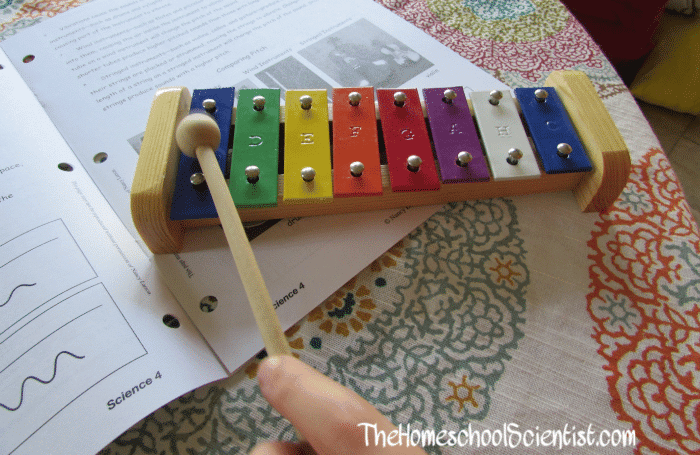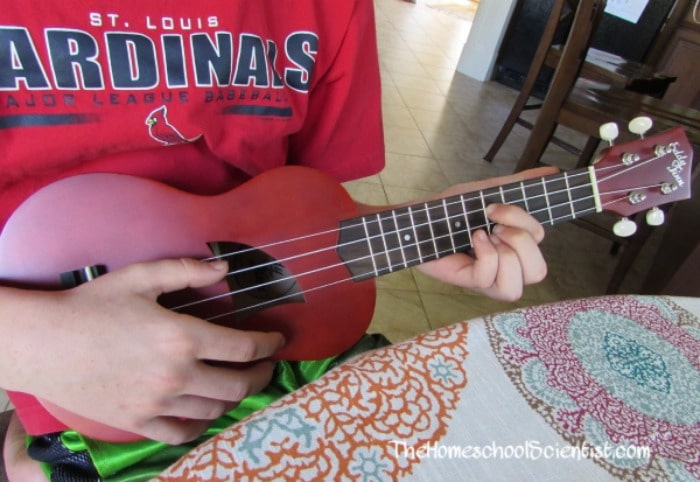Sound Experiments

Learn more about the physics of sound with these simple sound experiments. You’ll investigate volume and pitch and what causes changes in their qualities.
The sounds we hear – voices, music, birds chirping, dogs barking – are all caused by vibrations. When objects vibrate, they transfer energy in the form of sound waves. These sound waves travel through the air and when they hit our ear drums, the waves cause our eardrums to vibrate. Our brains interpret these vibrations as different sounds.
Some sounds are louder than other sounds. This is volume. Some sounds are higher than others. The highness and lowness of sounds is called pitch. The qualities of the sound waves are what make the difference in volume and pitch.
In our Nancy Larson Science 4 study of sound, we experimented with volume and pitch to determine what created differences.
Volume Experiment
We learned that large vibrations produce louder sounds and small vibrations produce softer sounds. To test this, we used a ukulele. You can use any stringed instrument or just a rubber band.
Pluck a string on the instrument or a stretched rubber band. Listen to the sound it makes. Pull the string back farther and pluck it again. The sound should have been louder. Ask your student why the second sound was louder.
Pulling the string or rubber band back farther created a larger vibration, thus a louder sound. The volume increased. To make a softer sound, don’t pull the string or rubber band back as far.
Repeat the experiment and look closely. You should be able to see the difference in the movement of the string in the two trials. You can actually see the increase in vibration strength.
Pitch Experiment
Differences in pitch are caused by the speed of vibrations. The faster something vibrates the higher the pitch. The slower the vibration the lower the pitch. For instance, a high pitched voice is caused by a fast vibrating vocal chords. A low pitched voice is caused by slower vibrating vocal chords.
We can use musical instruments to learn more about pitch. We used a ukulele and a xylophone.

Hit the longest bar of the xylophone with a mallet. Listen to the sound it creates. Now, hit the shorted bar. Note the differences in sound. Now, hit the bars from longest to shortest. You should notice that the longer the bar, the lower the pitch. The speed of the vibration is dependent on length of the bar. The shorter the bar the faster the vibration.

You can demonstrate the same thing with the ukulele. Pluck any string and listen to the sound. Next, shorten the string by placing a finger on the string. Pluck the string again and listen. The second sound should be higher pitched that the first.
For more information about pitch, visit DKFindOut.com.
Try these simple experiments with your kids. Use different instruments or create your own ways to make sound.
Nancy Larson Science
For more information about Nancy Larson Science, visit their website or check out the following blog posts.


